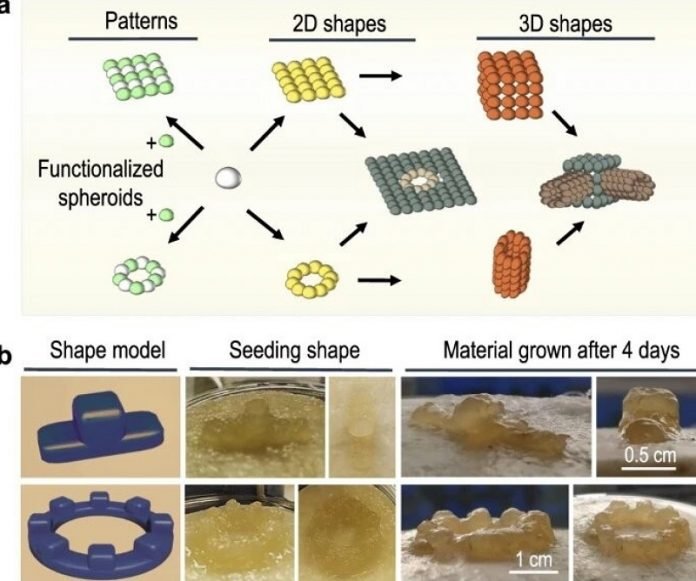
Scientists have created 3D building blocks that can heal themselves in response to damage.
The engineered living materials (ELMs) exploit biology’s ability to heal and replenish material and could respond to damage in harsh environments using a sense-and-response system.
This work, published in Nature Communications, could lead to the creation of real-world materials that detect and heal their own damage, such as fixing a crack in a windshield, a tear in the fuselage of an aircraft or a pothole in the road.
By integrating the building blocks into self-healing building materials, scientists could reduce the amount of maintenance needed and extend a material’s life and usefulness.
Lead author Professor Tom Ellis of the Department of Bioengineering at Imperial says that “in the past we’ve created living materials with inbuilt sensors that can detect environmental cues and changes.
Now we’ve created living materials that can detect damage and respond to it by healing themselves.”
In the same way that architecture uses modular pieces that can be assembled into a variety of building structures, this research demonstrates that the same principle can be applied to the design and construction of bacterial cellulose-based materials.
To create ELMs, the researchers genetically engineered bacteria called Komagataeibacter rhaeticus to have them produce fluorescent 3D sphere-shaped cell cultures, known as spheroids, and to give them sensors which detect damage.
They arranged the spheroids into different shapes and patterns, demonstrating the potential of spheroids as modular building blocks.
They used a hole punch to damage a thick layer of bacterial cellulose—the scaffold-like material made by some bacteria on which ELMs are produced.
They then inserted the freshly grown spheroids into the holes and, after incubating them for three days, saw excellent repair that was structurally stable and restored the consistency and appearance of the material.
Professor Ellis says that “by placing the spheroids into the damaged area and incubating the cultures, the blocks were able to both sense the damage and regrow the material to repair it.”
First author Dr. Joaquin Caro-Astorga of Imperial’s Department of Bioengineering says that their “discovery opens a new approach where grown materials can be used as modules with different functions like in construction.
We are currently working on hosting other living organisms within the spheroids that can live together with the cellulose-producing bacteria.
“The possible living materials that can come from this are diverse: for example, with yeast cells that secrete medically-relevant proteins, we could generate wound-healing films where hormones and enzymes are produced by a bandage to improve skin repair.”
The growth in popularity of bacterial cellulose for its outstanding properties is the response to the worldwide challenge to find new materials with better-tailored functional behaviors.
Dr. Patrick Rose, science director of US Office of Naval Research Global London, which part-funded the research, says that “the challenge is to mimic and combine the distinct features biology has to offer.
We are not only trying to emulate those systems, but engineer biology to have additional features that are more amenable to the needs we seek without direct intervention.
Ultimately, we want to increase the lifetime of a product, prevent failures of systems before the problem is visible to the naked eye and have the material think for itself.”
The next step for this group of researchers is to develop new spheroid building blocks with different properties, such as combining them with materials like cotton, graphite and gelatins to create more complex designs. This could lead to new applications like biological filters, implantable electronics or medical biosensor patches.
“Bacterial cellulose spheroids as building blocks for 3D and patterned living materials and for regeneration” by Ellis et al., published 19 August 2021 in Nature Communications.
Written by Caroline Brogan.



